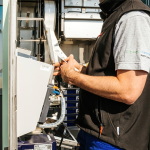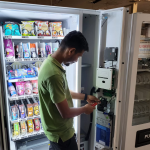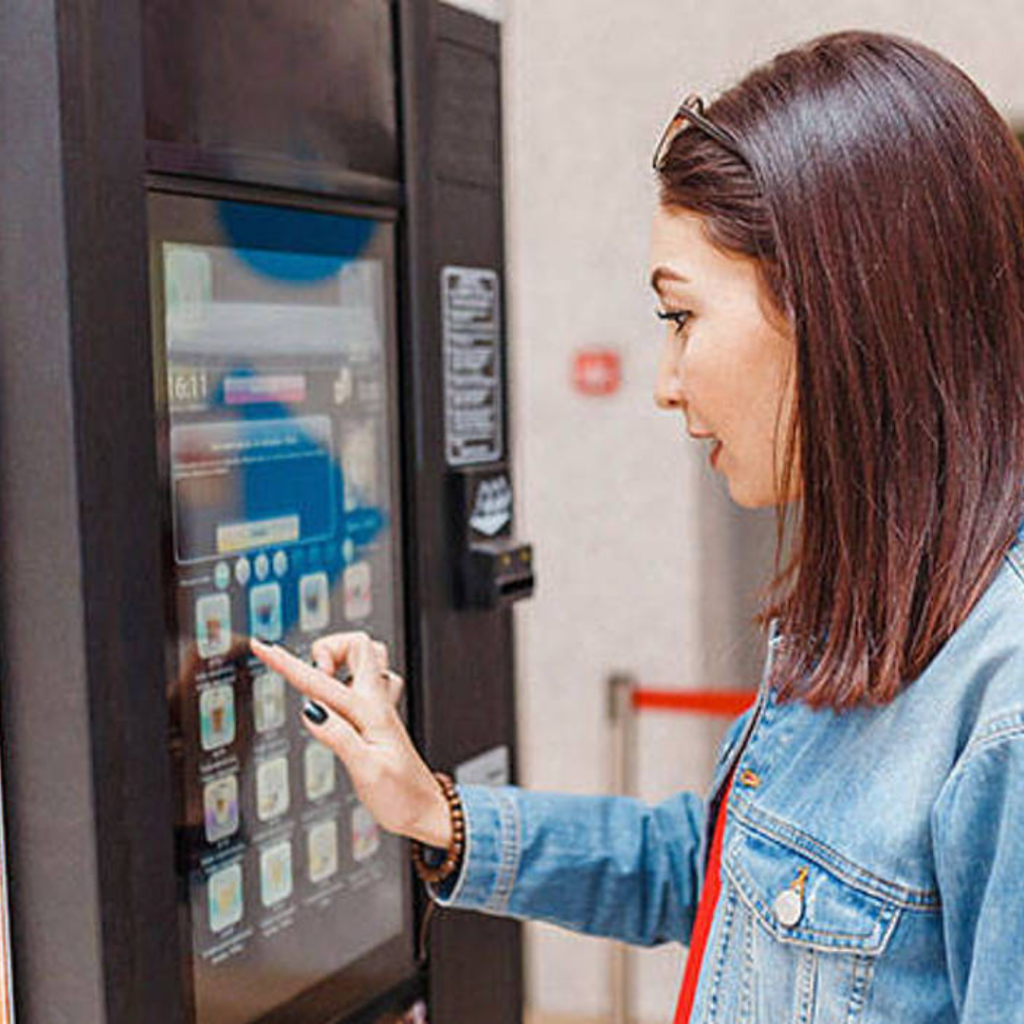The Smart Revolution: Embracing the Potential of Smart Vending Machines
Smart vending machines are reshaping the retail landscape. With AI, IoT connectivity, and data analytics, these advanced machines offer personalized experiences and superior operational efficiency. Join us as we delve into this technological revolution.
AI-Powered Smart Vending Machines
Smart vending machines, equipped with Artificial Intelligence, are redefining customer interactions. No longer are they passive units waiting for a coin drop. Instead, they actively engage with customers, predicting their preferences based on past interactions and even ambient factors like time of day or weather.
This AI-driven approach is personalized to the core. For instance, on a hot summer afternoon, the machine might prioritize displaying chilled beverages on its interface. Alternatively, it might recommend a high-energy snack during typical afternoon slump hours, intuitively addressing customer needs.
For businesses, this means enhanced user engagement, leading to higher sales. An AI-driven recommendation system can cross-sell and upsell products more effectively, ensuring customers find what they need, and sometimes even what they didn’t know they wanted.
Harnessing Data Analytics
Data is the new oil, and smart vending machines are striking it rich. These machines constantly gather data – from the most popular products at different times to customer demographics and even purchase patterns. But it’s not just about collecting data; it’s about analyzing it to make informed decisions.
By harnessing the power of data analytics, vending machine operators can gain insights into customer behavior, allowing them to tailor their offerings more effectively. For example, if data shows a surge in healthy snack purchases post 5 PM, operators can ensure they’re well-stocked to meet that demand.
For businesses, this leads to optimized inventory management, reduced wastage, and higher profitability. When you know what your customers want and when they want it, you can cater to their needs more efficiently.
IoT Connectivity & Remote Management
Internet of Things (IoT) has reshaped many industries, and vending machines are no exception. With IoT connectivity, smart vending machines can be managed and monitored in real-time, remotely. Whether it’s checking stock levels, updating software, or even troubleshooting, everything can be handled from a distance.
This level of connectivity ensures that machines are always operational, minimizing downtime. For instance, if a machine is running low on a specific product, it can automatically send a restock alert to the operator. Or, if there’s a system malfunction, it can notify technicians, ensuring swift repairs.
For businesses, this IoT integration translates to increased operational efficiency and reduced overheads. Not only does it save on manual checks and balances, but it also ensures that the machine is always ready to serve, maximizing revenue opportunities.
Personalized Customer Experiences
One of the standout features of smart vending machines is their ability to offer bespoke experiences to users. Using a combination of AI, data analytics, and user history, these machines can provide a shopping experience that feels deeply personal.
Returning customers might be greeted by name, offered their “usual” choices, or even given loyalty discounts or rewards. Such tailored interactions enhance customer satisfaction, making them more likely to return and increasing their average spend per visit.
For businesses, this personalization strategy can be a game-changer. It fosters brand loyalty and ensures repeat business, which is often more valuable and cost-effective than constantly acquiring new customers.
Enhanced Security & Payment Options
Smart vending machines are not just about intelligent product recommendations; they also prioritize user security. With encrypted payment gateways, touchless payment options, and secure software, users can make purchases with peace of mind.
Moreover, these machines support a plethora of payment methods – from credit cards to mobile wallets and even cryptocurrency in some advanced models. Such diverse payment options cater to a wider audience and ensure that no potential sale is lost due to payment constraints.
For businesses, this enhanced security means reduced risks related to cash handling or payment fraud. Additionally, offering multiple payment options increases the accessibility and attractiveness of the machine to a broader customer base.
Smart Vending Machines: Integrating with Smart Cities
The rise of smart cities is creating avenues for vending machines to be integrated seamlessly into urban ecosystems. These machines can now interface with city-wide networks, syncing with public transport schedules or even city events, tailoring their offerings accordingly.
Imagine a vending machine near a stadium adjusting its stock based on a big game night, ensuring fans have quick access to their favorite snacks and beverages. Or machines at transit stations offering commuters specific products based on weather conditions or time of day.
For businesses, this opens up the possibility of a much larger, interconnected retail network. It’s not just about a standalone machine anymore, but about a unit that is in sync with the rhythms of the city it’s placed in, maximizing potential sales and customer satisfaction.
Eco-friendly and Sustainable Solutions
As the world becomes more environmentally conscious, vending machines are adapting to be more sustainable. Newer models are being designed with energy-efficient systems, using solar power, or even incorporating recyclable materials in their build.
Furthermore, these machines can promote eco-friendly products, offer rewards for using reusable containers, or even act as collection points for recyclables. This shift not only reduces their carbon footprint but also resonates with a growing segment of eco-conscious consumers.
For businesses, this green initiative is not just about saving the environment. It’s a strategic move that appeals to a new generation of consumers, potentially increasing brand loyalty and driving higher sales from a demographic that values sustainability.
Smart Vending Machines: Multi-lingual and Accessibility Features
Smart vending machines are now catering to a global and diverse audience. With multi-lingual interfaces and accessibility features, they ensure that no user is left out. Whether it’s voice commands for the visually impaired or braille options, these machines are becoming more inclusive.
Tourist hotspots can benefit immensely from machines that switch languages based on user preference, ensuring that language is never a barrier to making a purchase. Such user-centric designs make these machines universally appealing.
For businesses, this inclusivity means tapping into a broader customer base. A machine that caters to everyone, regardless of language or physical ability, has a much wider appeal and can generate higher revenues.
Real-time Advertising and Promotions
With digital screens and AI capabilities, smart vending machines are becoming powerful advertising tools. They can display ads, promote products, or even run time-sensitive promotions based on user interactions or external factors.
For instance, during peak morning hours, a machine could promote a caffeine-based beverage with a limited-time discount. Or, based on purchase history, it could suggest complementary products, driving additional sales.
For businesses, this real-time advertising capability is a gold mine. Not only does it increase sales, but it also offers an additional revenue stream through third-party advertising, creating a dual-income model for machine operators.
Smart Vending Machines: Seamless Integration with Other Tech Platforms
In the era of interconnectivity, smart vending machines are not standalone entities. They are designed to integrate seamlessly with other tech platforms, from mobile apps to augmented reality (AR) experiences. Users could pre-order from an app and pick up from the machine, or use AR to get detailed product information.
Such integrations enhance user experience, making the vending process more interactive and engaging. It’s not just about getting a product anymore; it’s about an entire shopping experience that’s streamlined and enriched by technology.
For businesses, this seamless tech integration offers multiple touchpoints with consumers. It allows for richer interactions, detailed data collection, and an overall enhancement in the quality of service, ensuring that smart vending machines remain at the forefront of retail innovation.
Conclusion
Smart vending machines are more than just an evolution; they’re a revolution in the vending sector. By leveraging AI, data analytics, and IoT, they offer experiences that are not only personalized but also efficient. As businesses look to harness their potential, they’re not just investing in technology but in a future where vending becomes an interactive, intelligent, and integral part of the retail landscape.














